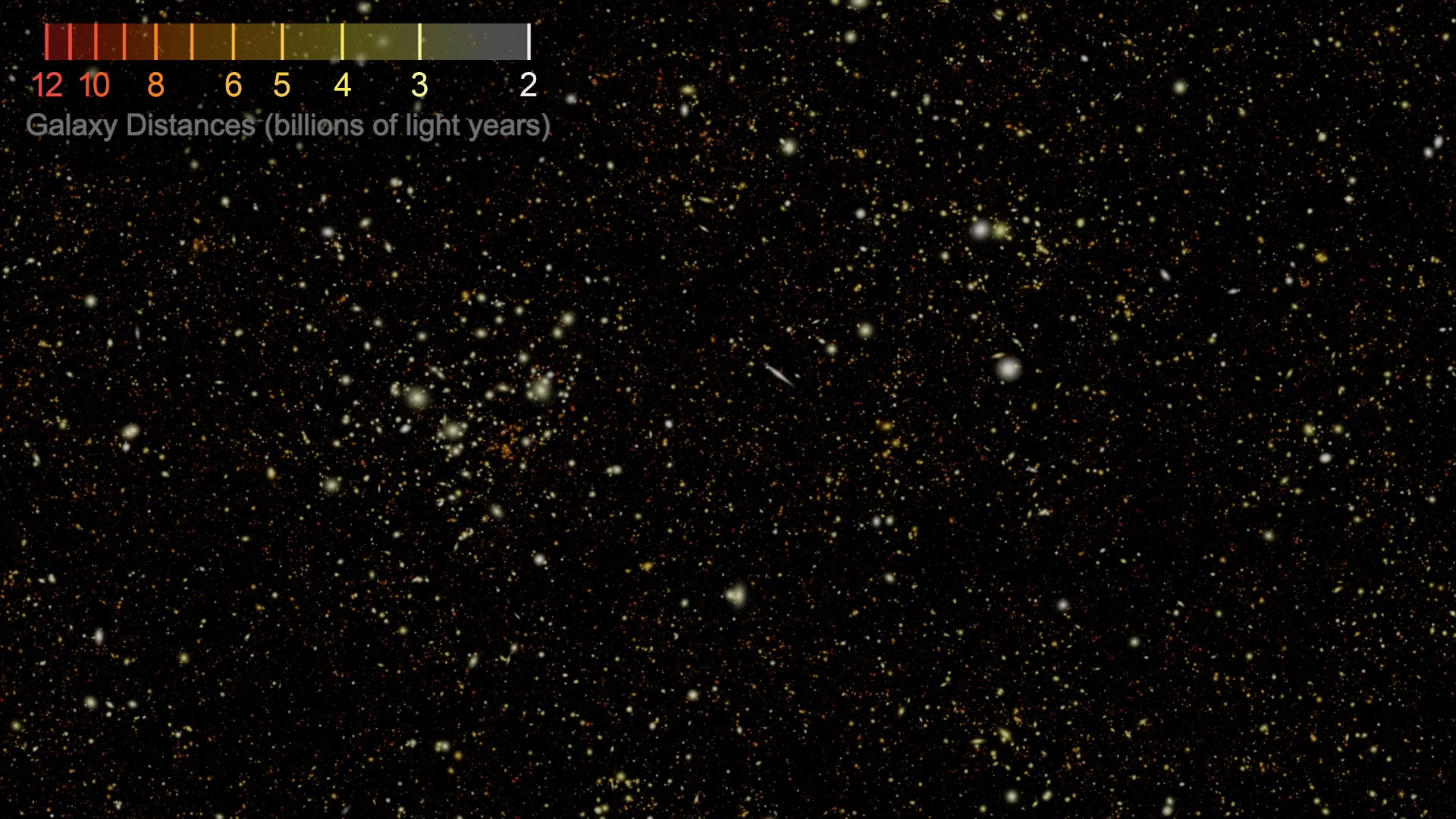NASA’s Roman Mission Gets Cosmic ‘Sneak Peek’ From Supercomputers

This graphic highlights part of a new simulation of what NASA’s Nancy Grace Roman Space Telescope could see when it launches by May 2027. The background spans about 0.11 square degrees (roughly equivalent to half of the area of sky covered by a full Moon), representing less than half the area Roman will see in a single snapshot. The inset zooms in to a region 300 times smaller, showcasing a swath of brilliant synthetic galaxies at Roman’s full resolution. Having such a realistic simulation helps scientists study the physics behind cosmic images –– both synthetic ones like these and future real ones. Researchers will use the observations for many types of science, including testing our understanding of the origin, evolution, and ultimate fate of the universe.
Credit: C. Hirata and K. Cao (OSU) and NASA’s Goddard Space Flight Center
Researchers are diving into a synthetic universe to help us better understand the real one. Using supercomputers at the U.S. DOE’s (Department of Energy’s) Argonne National Laboratory in Illinois, scientists have created nearly 4 million simulated images depicting the cosmos as NASA’s Nancy Grace Roman Space Telescope and the Vera C. Rubin Observatory, jointly funded by NSF (the National Science Foundation) and DOE, in Chile will see it.
For the first time, this simulation factored in the telescopes’ instrument performance, making it the most accurate preview yet of the cosmos as Roman and Rubin will see it once they start observing. Rubin will begin operations in 2025, and NASA’s Roman will launch by May 2027.
The simulation’s precision is important because scientists will comb through the observatories’ future data in search of tiny features that will help them unravel the biggest mysteries in cosmology.
Roman and Rubin will both explore dark energy –– the mysterious force thought to be accelerating the universe’s expansion. Since it plays a major role in governing the cosmos, scientists are eager to learn more about it. Simulations like OpenUniverse help them understand signatures that each instrument imprints on the images and iron out data processing methods now so they can decipher future data correctly. Then scientists will be able to make big discoveries even from weak signals.

Unlabeled version of the above.

This pair of images showcases the same region of sky as simulated by the Vera C. Rubin Observatory (left, processed by the Legacy Survey of Space and Time Dark Energy Science Collaboration) and NASA’s Nancy Grace Roman Space Telescope (right, processed by the Roman High-Latitude Imaging Survey Project Infrastructure Team). Roman will capture deeper and sharper images from space, while Rubin will observe a broader region of the sky from the ground. Because it has to peer through Earth’s atmosphere, Rubin’s images won’t always be sharp enough to distinguish multiple, close sources as separate objects. They’ll appear to blur together, which limits the science researchers can do using the images. But by comparing Rubin and Roman images of the same patch of sky, scientists can explore how to “deblend” objects and implement the adjustments across Rubin’s broader observations.
Credit: J. Chiang (SLAC), C. Hirata (OSU) and NASA's Goddard Space Flight Center

Unlabeled version of the above

This full-resolution image highlights part of a new simulation of what NASA’s Nancy Grace Roman Space Telescope could see when it launches by May 2027. The image spans about 0.11 square degrees (roughly equivalent to half of the area of sky covered by a full Moon), representing less than half the area Roman will see in a single snapshot.
Credit: C. Hirata and K. Cao (OSU)

This photo displays Argonne Leadership Computing Facility’s now-retired Theta supercomputer. Scientists use supercomputers to simulate experiments they can’t conduct in real life, such as creating new universes from scratch.
Credit: Argonne National Laboratory
Credits
Please give credit for this item to:
NASA's Goddard Space Flight Center. However, individual items should be credited as indicated above.
-
Science writer
- Ashley Balzer (eMITS)
-
Producer
- Scott Wiessinger (eMITS)
-
Scientist
- Michael Troxel (Duke University)
Missions
This page is related to the following missions:Series
This page can be found in the following series:Release date
This page was originally published on Wednesday, June 12, 2024.
This page was last updated on Monday, June 10, 2024 at 3:12 PM EDT.

